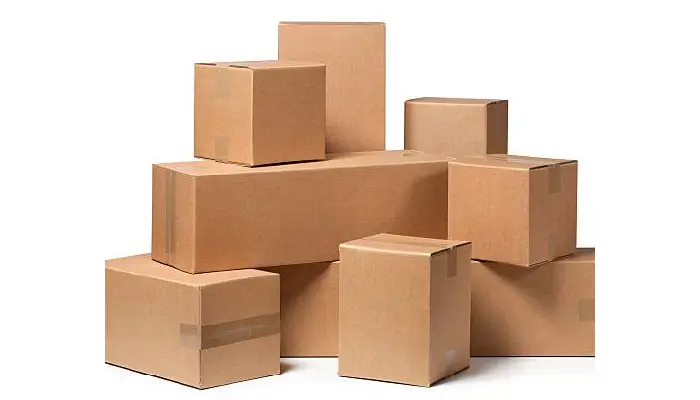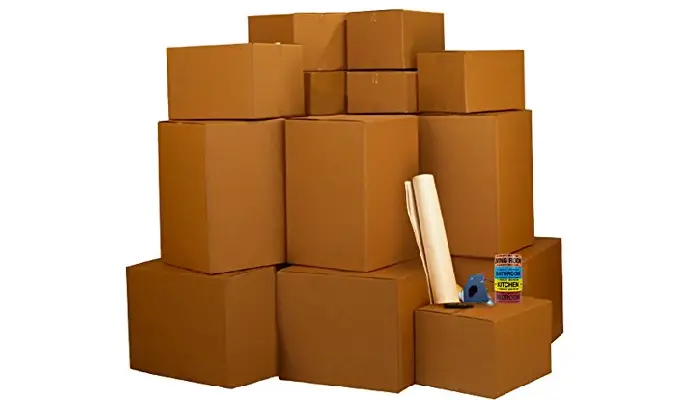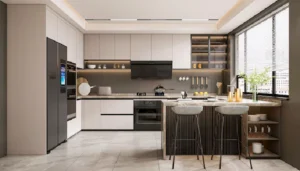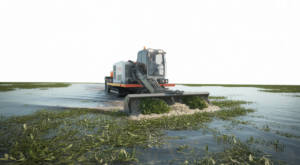Versatile Uses Of Cardboard Boxes For Packing: Beyond Just Shipping

Cardboard boxes are not limited to shipping; their versatility spans across various domains. In retail, they are used for product display and storage, aiding in organized stock management. Cardboard boxes for packing home use, these boxes are crucial during moving, providing a convenient way to pack and transport belongings securely. In offices, they facilitate the orderly archiving of documents and supplies. Additionally, cardboard boxes serve in educational and creative projects, from science experiments to art and craft. Their adaptability makes them indispensable in everyday life, proving that their value extends far beyond traditional shipping and packaging functions.
How To Choose The Right Size Of Cardboard Boxes For Packing
Selecting the appropriate size of cardboard boxes is pivotal to effective packing. Choosing a box that’s too small can lead to overpacking, increasing the risk of damage, while an oversized box may result in unnecessary movement and potential mishandling. Cardboard boxes for packing determine the right size, consider the dimensions and weight of the items being packed. For fragile items, opt for boxes with sufficient cushioning space. Standard sizes are available for common needs, but custom options can be tailored for unique requirements. Proper sizing ensures that items are securely packed, reducing the likelihood of damage and ensuring a smoother handling process.

Benefits Of Using Eco-Friendly Cardboard Boxes For Packing
Eco-friendly cardboard boxes offer numerous benefits, aligning with sustainability goals while maintaining functionality. Cardboard boxes for packing from recycled materials, these boxes reduce environmental impact compared to their non-recyclable counterparts. They are biodegradable, which means they decompose naturally, minimizing landfill waste. Additionally, using eco-friendly boxes can enhance a company’s reputation by demonstrating a commitment to environmental stewardship. For individuals, these boxes offer peace of mind knowing that their packing materials contribute to a greener planet. Adopting eco-friendly options supports broader efforts to reduce waste and promote recycling, benefiting both businesses and the environment.
How To Properly Label Cardboard Boxes For Packing
Proper labeling of cardboard boxes is crucial for efficient organization and retrieval. Use clear, Cardboard boxes for packing markers or labels to indicate the contents and destination of each box. Labeling should include essential information such as room or category (e.g., “Kitchen” or “Fragile”), and if applicable, handling instructions. For enhanced visibility, place labels on multiple sides of the box. This practice facilitates quicker identification, reducing the time spent searching for specific items. Effective labeling also helps in maintaining order during a move or shipment, ensuring that boxes are handled appropriately and placed in the correct locations.
Tips For Packing Fragile Items In Cardboard Boxes For Packing
When packing fragile items, extra care is required to ensure their safety. Cardboard boxes for packing by using high-quality cardboard boxes that are sturdy enough to withstand handling. Wrap each item individually with bubble wrap, packing peanuts, or foam to provide cushioning. Fill any empty spaces in the box with additional packing material to prevent shifting. Clearly label the box as “Fragile” to alert handlers of the contents. It’s also beneficial to pack heavier items at the bottom and lighter items on top to avoid compressing delicate objects. Following these tips helps protect fragile items from damage during transit or storage.
The Cost-Effectiveness Of Cardboard Boxes For Packing Your Items
Cardboard boxes offer a cost-effective solution for packing needs. Cardboard boxes for packing affordability stems from the relatively low cost of raw materials and manufacturing processes. They are readily available in various sizes, making them accessible for both small-scale and large-scale packing requirements. Compared to other packing materials, cardboard boxes are often more economical, providing a budget-friendly option for individuals and businesses alike. Additionally, their reusability further enhances their cost-effectiveness, as they can be repurposed for different packing tasks or storage solutions. This combination of affordability and practicality makes cardboard boxes a preferred choice for many packing scenarios.
Customizing Cardboard Boxes For Packing: Options And Benefits
Customizing cardboard boxes offers several advantages, particularly for businesses. Custom boxes can be designed to fit specific product dimensions, ensuring a snug and secure fit. Cardboard boxes for packing can also be branded with logos, colors, and other designs, enhancing brand visibility and creating a professional appearance. Customization options include various sizes, shapes, and finishes, allowing businesses to align packaging with their product presentation and marketing goals. For individuals, custom boxes can be tailored for unique storage or moving needs. The benefits of customization extend to improved protection, brand promotion, and a tailored packing experience, making it a valuable investment.
Best Practices For Storing Cardboard Boxes For Packing
Proper storage of cardboard boxes is essential to maintain their integrity and usability. Cardboard boxes for packing in a dry, cool area to prevent moisture damage, which can weaken the cardboard. Avoid stacking boxes too high, as excessive weight can lead to crushing or warping. If boxes are not in use, flatten them to save space and prevent deformation. Organize stored boxes in a way that allows easy access and retrieval, such as labeling the contents or placing frequently used boxes on top. By following these best practices, you ensure that cardboard boxes remain in good condition and ready for use when needed.
Conclusion
Cardboard boxes for packing are a fundamental component of efficient organization, shipping, and storage. Their versatility extends beyond traditional uses, making them a valuable resource in various contexts. Choosing the right size, embracing eco-friendly options, and properly labeling and packing items are key factors in maximizing their effectiveness. Customization provides additional benefits, enhancing both functionality and branding. By adhering to best practices for storage, you can ensure that these boxes remain reliable and ready for use. Understanding and implementing these strategies helps optimize packing processes, making cardboard boxes an indispensable tool for both personal and professional needs.







